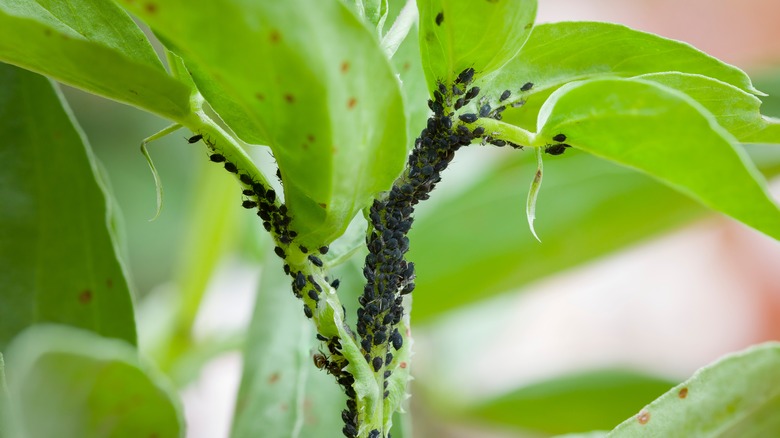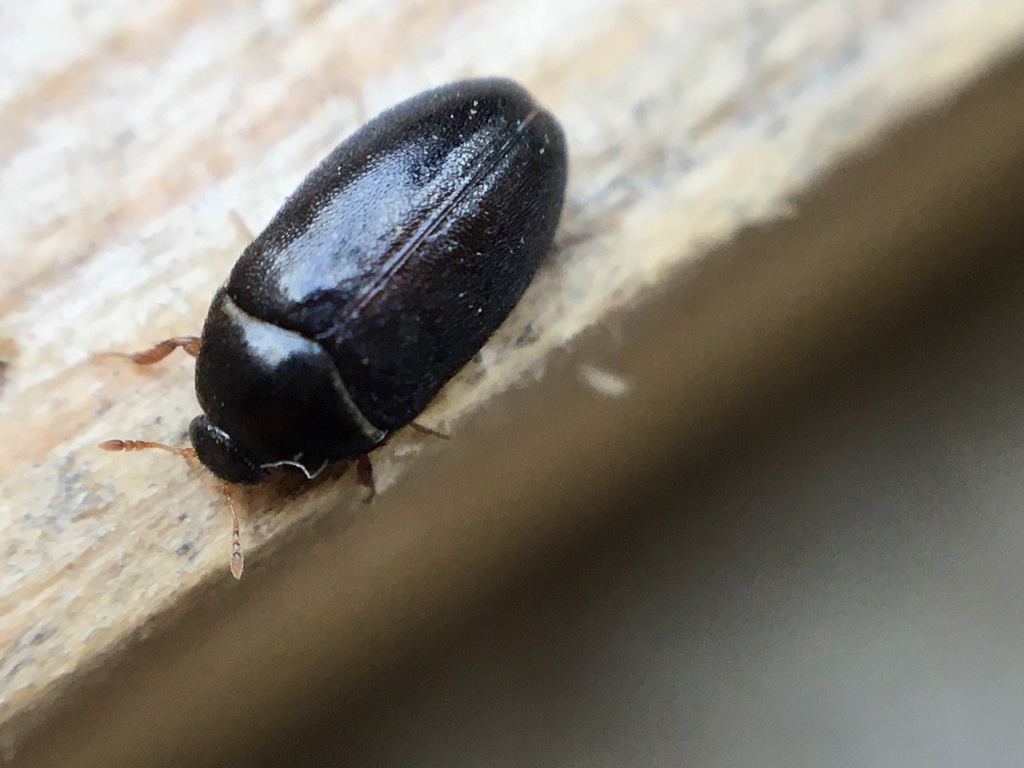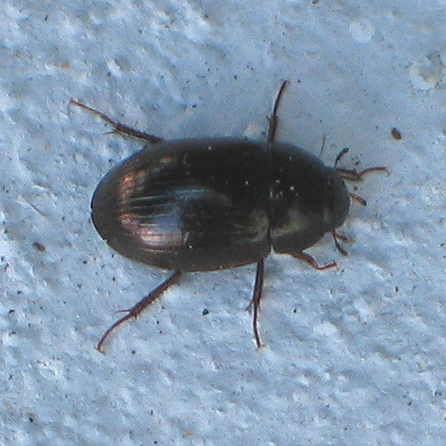Did you know ants can enter your home during warmer months and cause trouble? These tiny black bugs are just the start of the problems posed by black small bugs. From bed bugs to carpet beetles and cockroaches, these small creatures can do a lot of damage if not stopped.
It’s important to know what kind of black small bug is in your home to use the right control methods. Whether it’s ants, bed bugs, or another pest, understanding their looks, behavior, and what attracts them is key. This knowledge helps in preventing and getting rid of these pests.

But the issues with black small bugs don’t end there. These pests can live in many places, like damp spots or the kitchen. It’s crucial to know where they like to stay and what brings them there. By tackling the main reasons for their infestations, you can protect your home and family from them.
Identifying Common Black Small Bugs
Many small black bugs can enter our homes, each with unique looks and behaviors. Knowing about these pests helps us prevent and control them effectively.
Appearance and Behavior
Ants are common pests with three body parts, six legs, and antennae. Bed bugs have flat, oval bodies without wings. Carpet beetles have rounded bodies and short antennae. Cockroaches, like the German cockroach, are light brown to black, have long antennae, and spiny legs.
These bugs like dark, damp places and can multiply fast. This leads to problems like damage to structures and allergic reactions. Pantry Moths and Carpet Beetles infest food storage. Booklice and Drain Flies prefer moisture and decay. Fungus Gnats and Thrips live in moist soil and on plants.

It’s important to correctly identify these pests to treat them right. Cleaning, sealing entry points, and specific pest control are key to getting rid of small black bugs at home.
Where Do Black Small Bugs Thrive?
Household Pests, Pantry Moths, Carpet Beetles, Booklice, Drain Flies, Fungus Gnats, and Thrips are common black small bugs that can enter your home. Knowing where they live is key to stopping them from taking over.
These bugs look for food, water, and shelter to survive. Kitchens and bathrooms are perfect spots for them because they’re moist and have lots of food like crumbs. Leaky pipes and standing water make these areas ideal for breeding.
Each type of black small bug likes different places. Pantry Moths live in pantries, eating grains and dry goods. Carpet Beetles hide in carpets and fabrics, eating organic stuff. Booklice prefer damp places and can be found in books and wooden furniture.
- Pantry Moths: Attracted to pantries and kitchen cabinets, where they feed on stored grains and dry goods.
- Carpet Beetles: Found in carpets, upholstery, and fabrics, where they lay their eggs and feed on organic materials.
- Booklice: Attracted to damp, humid environments and can be found in books, papers, and wooden furniture.
- Drain Flies: Thrive in moist, organic-rich environments, such as drains, where they lay their eggs and feed on the slimy buildup.
- Fungus Gnats: Prefer moist, soil-rich environments, often found near potted plants or in damp corners of the home.
- Thrips: Can be found in indoor plants, gardens, and even on stored food, particularly in warm, dry conditions.
Knowing where black small bugs live helps homeowners fight them off. Clean regularly, control moisture, and seal up entry points to keep these pests away.
Black Small Bugs and Water Damage
Household pests like cockroaches, termites, and carpenter ants love moist places. Water damage from leaks, floods, or high humidity makes your home a perfect spot for them.
Cockroaches are drawn to damp spots like bathrooms and kitchens for food and water. Termites and carpenter ants prefer damp, rotting wood from water damage. They use it for food and to build their nests.
Research shows cockroaches can survive a month without food. Silverfish need lots of moisture to live. Termites often hang out near moist spots, like peeling wallpaper in bathrooms. Springtails are super sensitive to moisture and can stay indoors if there’s fungus, mildew, or rotting stuff.
To stop black small bugs from taking over, fix water damage fast and keep your home dry and well-ventilated. This means fixing leaks, improving drainage, and controlling humidity. By doing this, you make your home less welcoming to these pests.
Remember, water damage is key to black small bugs’ success. Fixing this issue helps protect your home and family from pests like cockroaches, termites, and carpenter ants.
Preventing Black Small Bugs in the Kitchen
The kitchen is a hotspot for black small bugs because it has food, water, and shelter. Ants, cockroaches, rodents, house flies, fruit flies, and pantry pests love the kitchen. They can contaminate food and cause health problems if not stopped. Keeping the kitchen clean is key to keeping these pests away.
Cleaning up spills and crumbs quickly is a great way to keep bugs away. Food bits attract pests like weevils and carpet beetles. Storing food in airtight containers and fixing moisture issues also helps. This makes the kitchen less inviting to pests.
Sealing up cracks and crevices outside your home stops bugs from getting in. Fruit flies and black cockroaches can sneak into your kitchen through tiny openings. This is why sealing these spots is crucial.
Keeping your kitchen clean, throwing away rotten food, and using covered trash cans helps keep pests away. These steps can keep your kitchen safe from black small bugs. By being proactive, you can enjoy a clean, safe kitchen.
- Promptly clean up spills and crumbs to remove food sources for pests
- Use airtight containers to store food and address moisture issues like leaky pipes
- Seal cracks and crevices around the exterior of the home to prevent entry points
- Dispose of decaying produce, change garbage frequently, and use lidded cans
- Maintain a tidy kitchen to deter a wide range of pests, including ants, moths, grain mites, and weevils
By following these easy steps, you can greatly lower the chance of black small bugs taking over your kitchen. This keeps your home safe and healthy.
Conclusion
Black small bugs can be a big problem for homes. They can damage structures, contaminate food, and cause allergies. Knowing what kind of bug you have is the first step to dealing with them. It’s also important to know where they like to live, like damp places or the kitchen.
To keep these pests away, focus on cleanliness, fix moisture issues, and seal up any gaps. Regularly checking for signs of pests and dealing with them quickly is also key. This helps keep your home free from bugs.
For a complete solution, identify the pests, prevent them from coming in, and treat them effectively. With the right knowledge and effort, you can keep your home safe from these pests. This way, you can enjoy a peaceful, bug-free living space.
